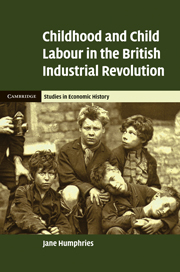3 - Families
Published online by Cambridge University Press: 06 December 2010
Summary
Introduction
Exceptional individuals, perhaps, but faced with ordinary circumstances. Is the characterization of those men who by writing their histories selected themselves for inclusion in this study accurate? This chapter is concerned with the boys' family circumstances. It investigates whether their households resembled in size and structure those thought typical of the era. Along the way, there are discoveries about the families and their internal and external relationships, for the distinctive time horizon, standpoint and focus of the autobiographies illuminate hitherto enigmatic aspects of family life.
The conventional sources and the methods developed to analyze them are not conducive to an understanding of family relationships and kin ties. Early modern household surveys coldly enumerate household members and provide bare descriptions of their relationships (‘wife’, ‘grandchild’, ‘lodger’). Families remain black boxes whose inner workings are a matter for speculation based on their outside appearances. In contrast, the autobiographies describe life within families. They deepen understanding of relationships with mothers, fathers and siblings, and, more generally, the nature of kinship and the economic and social networks that bound kin together, aspects of family life explored further in chapters 5 and 6 below. The picture that emerges provides the context for understanding key aspects of working-class childhood: reasons for starting work; nature of first job; choice of apprenticeship; and extent of schooling.
- Type
- Chapter
- Information
- Publisher: Cambridge University PressPrint publication year: 2010

